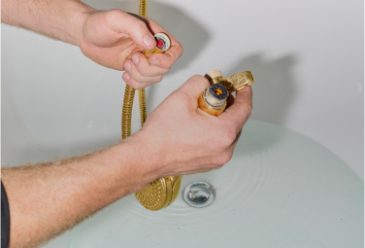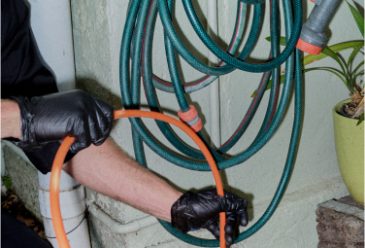A toilet cistern isn’t just a tank of water on top of your toilet. It’s the powerhouse behind every flush, affecting how well your toilet performs, how much water it uses, and even the look and feel of your bathroom. The right toilet cistern balances function, form, and efficiency. Knowing what to look for helps avoid leaks, poor flushes, and future repairs. Factors such as size, flush type, materials, and water efficiency all play a role, especially in Australian homes where saving water is both a practical and environmental concern.
Below, we’ll walk you through everything you need to know—from understanding how a toilet cistern works to exploring different types, comparing key features, and spotting signs it’s time for a replacement. We’ll also cover how to maintain your cistern for years of reliable performance.
What Is a Toilet Cistern and How Does It Work?
A toilet cistern is the tank located above or behind your toilet bowl. It stores water used for flushing and contains the mechanisms that control the water’s release. When you flush, the cistern rapidly releases water into the toilet bowl, clearing waste and preparing for the next use.
Inside a typical bathroom cistern, you’ll find a series of components that control water flow and refill after each flush. While traditional cisterns relied on siphon-based systems, modern cisterns often use dual-flush or pressure-assisted mechanisms for improved water efficiency and performance.
What does a toilet cistern do?
The cistern’s main job is to store a set volume of water and release it quickly when needed. This surge of water pushes waste through the trap and into the sewer system, keeping your toilet clean and hygienic with each use.
Key parts of a toilet cistern
- Inlet valve – Controls water flow into the cistern
- Flush valve – Releases water into the bowl during flushing
- Float – Rises and falls with the water level to signal when to stop filling
- Overflow tube – Prevents water from spilling out if the fill valve fails
- Flush button or lever – Triggers the flushing mechanism
Modern vs traditional cistern mechanisms
Older siphon systems rely on a vacuum effect and often feature a single flush volume. Modern cisterns, on the other hand, typically come with:
- Dual-flush mechanisms – Allow users to choose between a full or half flush, improving water efficiency
- Pressure-assisted systems – Use air pressure to deliver a powerful flush with less water
What Types of Toilet Cisterns Are Available?
There are several types of toilet cisterns, each suited to different bathroom layouts, design preferences, and budgets. Here’s a quick comparison:
Type | Pros | Cons | Ideal Use Case |
Close-coupled | Easy to install, budget-friendly | More visible in the room | Standard bathrooms |
Concealed (in-wall) | Saves space, sleek appearance | Harder to access for repairs | Modern, minimalist bathrooms |
Low-level | Classic look, easy access | Takes more wall space | Traditional or period homes |
High-level | Heritage charm, strong flush | Requires more vertical space | Vintage-style renovations |
Back-to-wall | Neat look, hides pipework | Wall modifications required | Contemporary bathrooms |
Close-coupled cisterns
The most common setup in Australian homes, where the cistern is attached directly to the toilet pan. It’s simple, cost-effective, and relatively easy to replace or maintain.
Concealed or in-wall cisterns
These modern units hide the cistern behind a wall or cabinet, offering a clean, minimalist look. They’re great for small bathrooms but can be trickier to repair due to limited access.
Low-level and high-level cisterns
Low-level toilet cisterns are mounted on the wall just above the toilet, connected via a short flush pipe. High-level cisterns, often found in heritage homes, are mounted high with a pull chain. Both are largely chosen for aesthetic or nostalgic reasons.
Back-to-wall cisterns
Back-to-wall toilets pair with a concealed cistern behind a false wall or cabinet, combining the sleek look of an in-wall system with easier access.
What Features Should You Consider When Choosing a Toilet Cistern?
When selecting a cistern toilet, it’s important to consider practical features that will impact your daily use and long-term maintenance.
- Flush mechanism: Choose between single-flush or dual-flush systems. Dual-flush is more water-efficient and is now standard in most Australian homes.
- Water efficiency: Check the WELS (Water Efficiency Labelling and Standards) rating. The more stars, the more water you save.
- Material: A plastic cistern is typically lighter, more affordable, and easier to install. Ceramic cisterns offer a more traditional look and greater durability, but tend to be heavier and more expensive.
- Size and compatibility: Not all cisterns fit all toilet pans. Check measurements carefully and confirm compatibility with your existing setup.
Flush mechanism: single vs dual
Single-flush systems use the same amount of water for every flush. Dual-flush systems offer two options—typically 3L for liquid waste and 6L for solid waste—cutting water usage significantly.
Water efficiency and WELS ratings
A 4-star WELS rating means your cistern uses just 3.5L average per flush, compared to older models that might use 11L. Always choose cisterns with at least 4 stars to save on bills and environmental impact.
Material: plastic cisterns vs ceramic
Plastic cisterns are corrosion-resistant, lightweight, and widely used. Ceramic models are more robust and suited to premium bathrooms, but can crack if dropped.
Size and compatibility
Measure the height, depth, and width of your current setup. If replacing only the cistern, ensure it matches the mounting and water inlet locations of the existing toilet bowl.
How Do You Replace a Toilet Cistern?
Replacing a toilet cistern can be a straightforward DIY job, but only if the setup is simple and you’re confident in your plumbing skills. Otherwise, a licensed plumber can help you install a replacement toilet cistern safely and efficiently.
Signs you may need a replacement toilet cistern
- Persistent leaks around or under the tank
- Cracks in the cistern body
- Difficulty flushing or inconsistent flush strength
- Water running continuously
Tools and materials you’ll need
- Adjustable wrench
- Screwdriver
- Teflon tape
- New cistern (matching model or compatible unit)
- Bucket and towel
Step-by-step overview
- Turn off the water supply.
- Flush the toilet and empty the cistern.
- Disconnect the water inlet and mounting bolts.
- Remove the old cistern.
- Install the new unit according to the manufacturer’s instructions.
- Reconnect plumbing and test for leaks.
When to call a professional plumber
Call a licensed plumber if:
- Your cistern is concealed or back-to-wall
- You’re unsure about compatibility
- There are signs of water damage or mould
Visit Master Plumbers Australia for help finding a qualified professional.
How Do You Maintain and Troubleshoot a Toilet Cistern?
Good maintenance prevents annoying issues like weak flushes or constant refills. Here’s how to keep your bathroom cistern running smoothly.
Regular maintenance tips
- Check seals and fittings for wear every 6–12 months.
- Clean around moving parts to prevent buildup.
- Avoid using harsh chemicals that may degrade plastic parts.
Common problems and quick fixes
- Constant running water: Check for a faulty inlet or flush valve.
- Slow filling: Clean or replace the inlet valve filter.
- Noisy flush: Air in the pipes or worn fill valves may be the cause.
When maintenance isn’t enough
If your toilet still leaks or struggles to flush despite cleaning or replacing small parts, it’s time for a new cistern.
Get in Contact with Good Hands Plumbing Today
If you’re dealing with a faulty cistern, planning a bathroom upgrade, or simply unsure which toilet cistern suits your home, Good Hands Plumbing is here to help. Contact us for expert advice, professional installation, and fast service across a wide range of plumbing needs.
FAQs
How long does a toilet cistern last?
A quality cistern can last 10–15 years with regular maintenance. Hard water, poor installation, or low-quality parts may shorten its lifespan.
Can I replace just the cistern without replacing the whole toilet?
Yes, in many cases. As long as the toilet bowl is in good condition and the new cistern is compatible, a partial replacement is possible.
What is the most water-efficient type of cistern?
Dual-flush cisterns are the most water-efficient, using as little as 3L per flush. Look for models with a 4–5 star WELS rating for best results.
Are all cisterns compatible with any toilet bowl?
No. Mounting holes, size, and flush mechanisms vary. Always check the manufacturer specs or consult a plumber before buying.
How do I know if my cistern needs to be replaced or repaired?
Persistent leaks, cracks, or poor flush performance are signs of replacement. Minor issues like slow filling may only require simple repairs.



